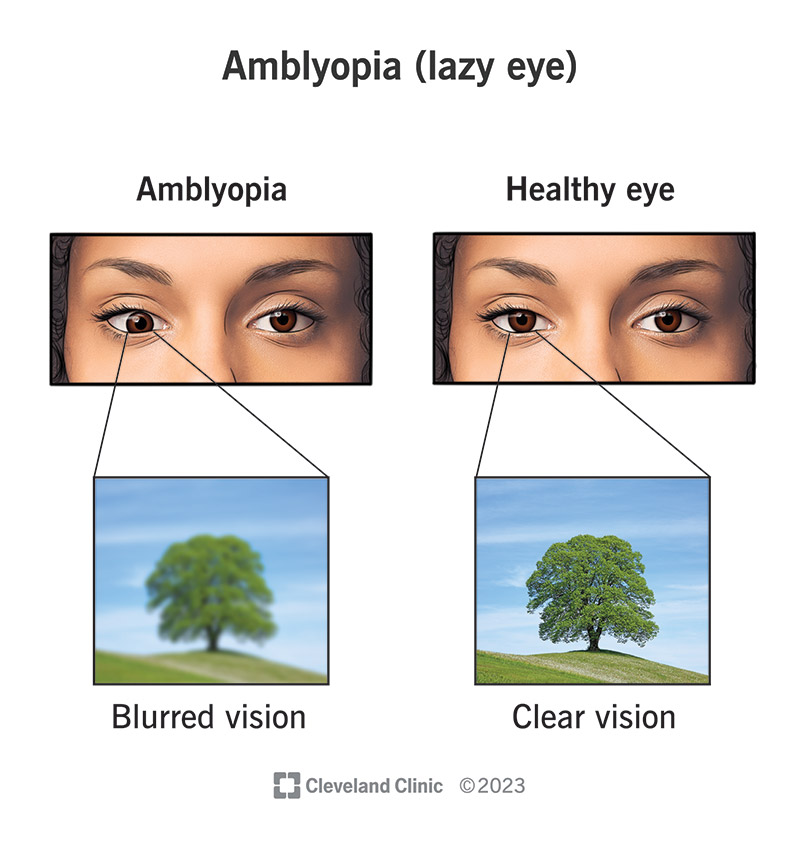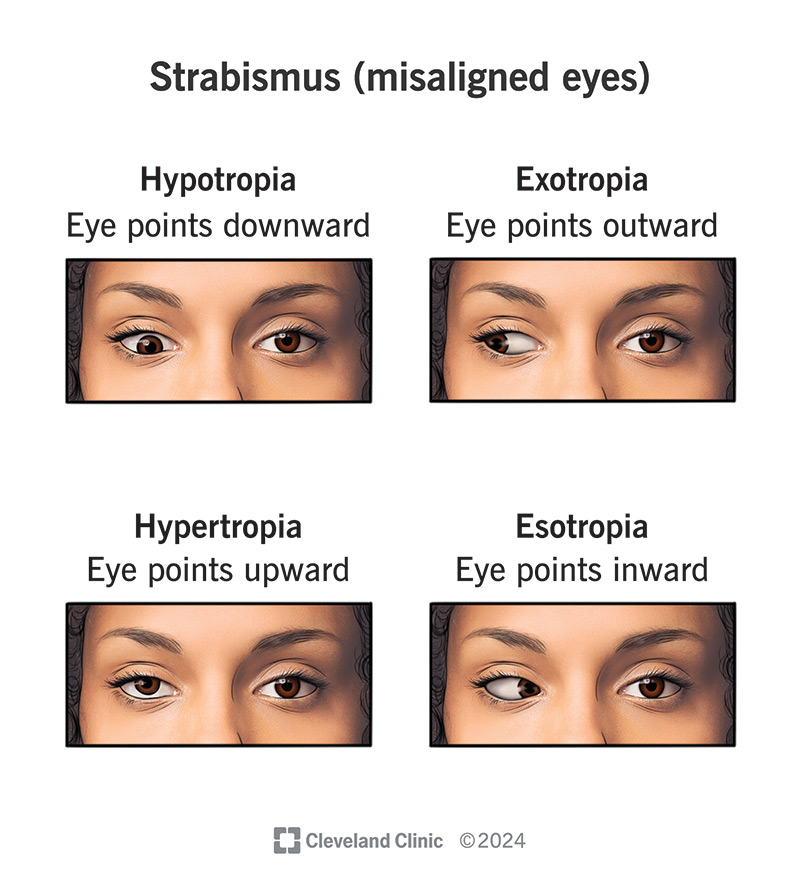
18 Nov Catching Amblyopia (Lazy Eyes) Early: Tips for Parents
Catching Amblyopia (Lazy Eyes) Early: Tips for Parents
By Island Hospital | November 18, 2024 12:00:00 PM
Medical Reviewer: Dr. Vanessa Naseem Neoh, Ophthalmologist
Children often exhibit playful behaviours, including tilting their heads while watching television. While this might seem innocuous, such subtle cues can sometimes signal underlying visual problems.
Amblyopia, commonly known as ‘lazy eye’, is a prevalent childhood condition that can result in reduced visual acuity.
This ocular disorder affects about 6% of individuals worldwide and typically manifests during the formative years of visual development (1 to 7 years old).
Fortunately, understanding and managing potential risk factors through early detection and preventive measures can significantly reduce the likelihood of amblyopia.
This article offers guidance for parents on preventing amblyopia in children, emphasising proactive eye care.
What is Amblyopia?

Photo by Cleveland Clinic
Amblyopia is an eye condition where the brain does not process visual information from one eye as effectively as it does from the other. This imbalance can lead to blurred or reduced vision in the weaker eye.
Causes of Amblyopia
The underlying cause of amblyopia is often unknown. However, in some cases, it can be a consequence of other vision problems.
Some conditions that cause amblyopia includes:
- Refractive errors
Refractive errors are conditions that affect the shape of the eye or its ability to focus, resulting in blurry vision.
Common refractive errors that can lead to amblyopia include:- Nearsightedness (myopia): Difficulty seeing distant objects clearly.
- Farsightedness (hyperopia): Difficulty seeing objects up close.
- Astigmatism: An irregular curvature of the cornea, causing blurred vision in multiple directions.
- Strabismus

Photo by Cleveland Clinic
Strabismus is a condition where the eyes are misaligned, causing them to look crossed or turned outward.
- Structural eye conditions
Other structural eye conditions that can cause visual blur and amblyopia include:- Ptosis: Drooping eyelids that can partially block the field of vision.
- Cataracts: Clouding of the lens of the eye.
- Corneal issues: Problems with the clear front part of the eye.
- Disorders with the optic nerve or retina.
Signs and Symptoms
Amblyopia can be difficult to detect in children, often going unnoticed until conducting a comprehensive eye exam.
If you observe any of the following symptoms, it may indicate a potential case of amblyopia:
- Poor depth perception: Bumping into objects, especially on one side of the body.
- Preference for one side: Favouring one side of the body.
- Eyelid behaviour: Closing one eye or squinting frequently.
- Head tilt: Tilting the head to one side when looking at something.
- Eye alignment issues: Crossed eyes or drooping eyelids.
Risk Factors and Complications
Amblyopia can affect any child, but certain factors may increase the risk. These include:
- Family history: Having family members with eye or vision problems.
- Developmental delays: Delays in reaching developmental milestones.
- Prematurity: Being born before 37 weeks of pregnancy.
- Low birth weight: Being born weighing less than 5 pounds, 8 ounces.
Contrary to its name, laziness is not the cause of amblyopia.
The loss of vision can range from mild to severe, and may become permanent if not corrected early or before the age of seven.
Protect your vision with timely treatment. Learn more about diabetic retinopathy and its prevention in our comprehensive article.
Diagnosis and Tests for Amblyopia
Detecting amblyopia early is crucial for successful treatment. Here are the common diagnostic procedures:
1. Comprehensive Eye Exam
A thorough eye exam by an ophthalmologist or optometrist is essential. This includes:
- Visual Acuity Test: Checking your child’s vision in each eye separately.
- Cover Test: Observing how the eyes move when one eye is covered.
- Retinal Examination: Assessing the health of the retina.
- Pupil Dilation: Dilating the pupils to examine the eye’s internal structures.
2. Additional Tests
Depending on the suspected cause of amblyopia, other tests may be necessary:
- Refraction Test: Measuring the eye’s focusing power to determine the need for glasses or contact lenses.
- Strabismus Evaluation: Assessing the alignment of the eyes.
- Imaging Tests: Using techniques like MRI or CT scans to identify underlying structural abnormalities.
Early Detection Measures
Early detection and treatment of amblyopia are essential to prevent vision impairment in children.
It is important that all children undergo at least one vision screening between the ages of 3 and 5 to identify potential cases of amblyopia or associated risk factors.
Frequency of Children’s Visits to the Ophthalmologist
Some children may require more frequent visits due to specific conditions, while a general guideline for healthy children is to schedule appointments at the following ages:
| Children with abnormalities | Immediate consultation upon noticing abnormalities. |
|
| Children with normal vision | None |
Amblyopia Treatments
Amblyopia treatment typically involves strengthening the weaker eye. This is often achieved by using:
- Eye Patches
The stronger eye is covered for this treatment, forcing the brain to rely more on the weaker one. It usually takes several months for vision to improve in the weaker eye.Once vision is strengthened, wearing an eye patch part-time for a few years can help maintain the improvement. - Eye Drops
Atropine eye drops may temporarily blur vision in the stronger eye, forcing the brain to rely more on the weaker eye.These drops are safe and do not cause permanent vision changes. - Special Eye Lenses
Correcting refractive errors with glasses can help improve vision in amblyopia. This can encourage the brain to use both eyes more effectively.Glasses may be used in conjunction with other treatments. - Surgery
Surgery is rarely necessary for amblyopia. This method may be up for consideration if cataracts or other structural eye issues are present and cannot be addressed with nonsurgical methods.You will need to discuss this with your child’s eye care specialist. - Other Treatment Forms: Virtual Reality
A promising new treatment for amblyopia involves using a virtual reality headset.This technology can help children ages 4-7 improve their vision by encouraging the use of their weaker eyes.
An ophthalmologist is responsible for diagnosing and treating amblyopia. Check out our article to learn what to expect and how to prepare for your visit!
Parenting Tips for Home Care Amblyopia Treatment
As a parent, you have a crucial role in supporting your child’s successful amblyopia treatment at home. Here’s a breakdown of your key responsibilities:
1. Adherence to the Treatment Plan
- Consistency
Ensure strict adherence to the prescribed treatment regimen, whether it involves patching, eye drops, or wearing special glasses. - Monitoring
Regularly check for any changes in your child’s vision or behaviour, and report any concerns to the ophthalmologist.
2. Creating a Supportive Environment
- Positive Reinforcement
Encourage your child to wear their prescribed eyewear or patch without hesitation. Make it a positive experience by involving them in choosing accessories or offering rewards for compliance. - Addressing Concerns
Openly discuss any questions or anxieties your child may have about the treatment. Reassure them of the importance of the process and the positive outcome it will bring. - Family Unity
Ensure all family members understand the treatment plan and are supportive of your child’s efforts. A united front can make a significant difference.
3. Lifestyle Modifications
- Screen Time Management
Limit excessive screen time, as it can exacerbate eye strain and hinder vision development. - Outdoor Activities
Encourage outdoor activities to provide natural light and visual stimulation, which can benefit overall eye health.
4. Follow-Up Appointments
- Adherence
Adhere to the recommended schedule of follow-up appointments with the ophthalmologist. Regular check-ups are essential to monitor progress and make necessary adjustments to the treatment plan.
You can significantly contribute to your child’s successful amblyopia treatment by actively participating in these areas to positively impact the outcome.
Don’t Delay in Protecting Your Child’s Vision
Early intervention is crucial for amblyopia treatment.
Children with untreated amblyopia may face permanent vision difficulties later in life.
Island Hospital’s ophthalmology department boasts a team of renowned specialists committed to providing exceptional eye care.
Our expertise in advanced diagnostics, innovative treatments, and compassionate support has earned us recognition both locally and internationally.
We are proud to be:
- A finalist for Malaysia’s Flagship Medical Tourism Hospital Programme
- A place on Newsweek’s list of World’s Best Hospitals 2024
- A place Global Health Asia Pacific Awards 2024
Don’t wait for symptoms to worsen before seeking professional care.
Schedule an eye exam with us today to learn more about our comprehensive treatment options.
FAQ
Can amblyopia be cured?
Amblyopia is often treatable, but complete “curing” may not always be possible, especially in severe cases or when detected late. The earlier amblyopia is diagnosed and treated, the better the chances of improving vision.
What age is too late to treat amblyopia?
While amblyopia treatment is most effective before age 5, it can still benefit individuals at any age.
Treatment after age 5 is possible but may be less effective due to the established nature of these connections. Approximately 50% of children aged 7-17 respond well to treatment.
An ophthalmologist can recommend the most appropriate treatment options based on the individual’s age and specific vision needs.
Can LASIK surgery fix my lazy eye?
LASIK surgery is generally ineffective for treating amblyopia due to underlying neurological issues, but it may improve vision in some cases where residual sight exists in the weaker eye, indicating active brain pathways.
How long should the eye patch be worn?
The duration of eye patching for amblyopia treatment varies depending on the severity of the condition and the individual’s response to therapy.
Children with amblyopia should wear an eye patch over their stronger eye for two to six or more hours daily.
Why does your child need to see a paediatric ophthalmologist?
A paediatric ophthalmologist is essential for your child’s eye health, especially for early detection and prevention of vision problems. They are specialists trained to diagnose and treat eye conditions unique to children.
Opting to see a paediatric ophthalmologist helps you ensure your child’s vision develops optimally.
Related Doctors
| Derived from | Complications |
|---|






